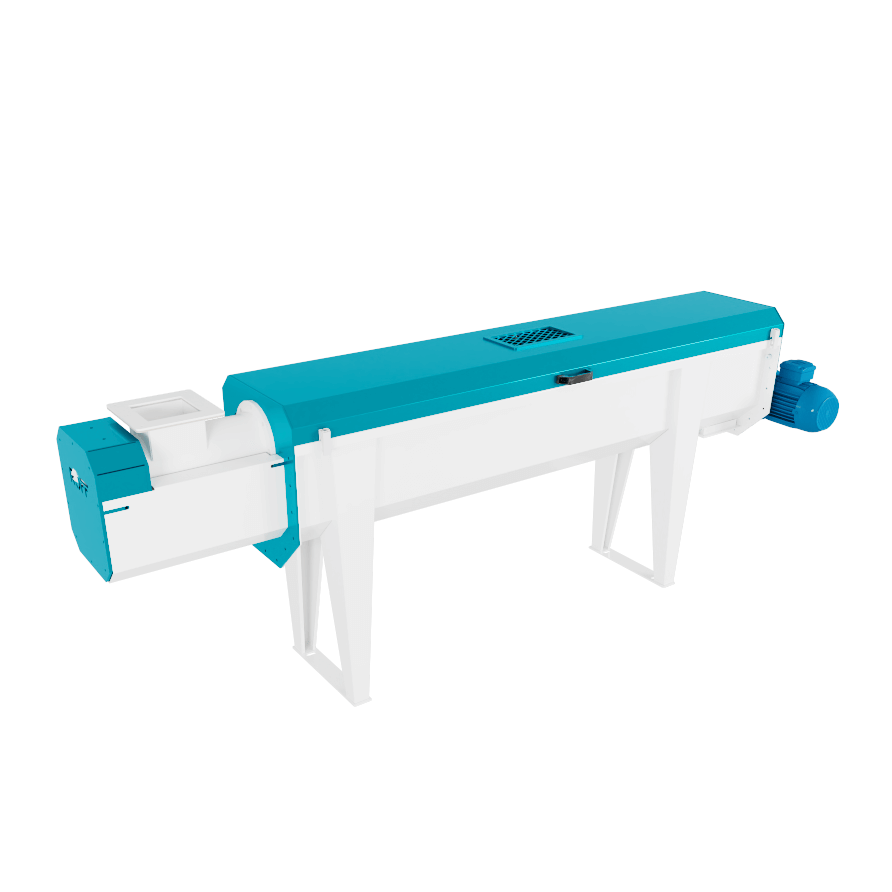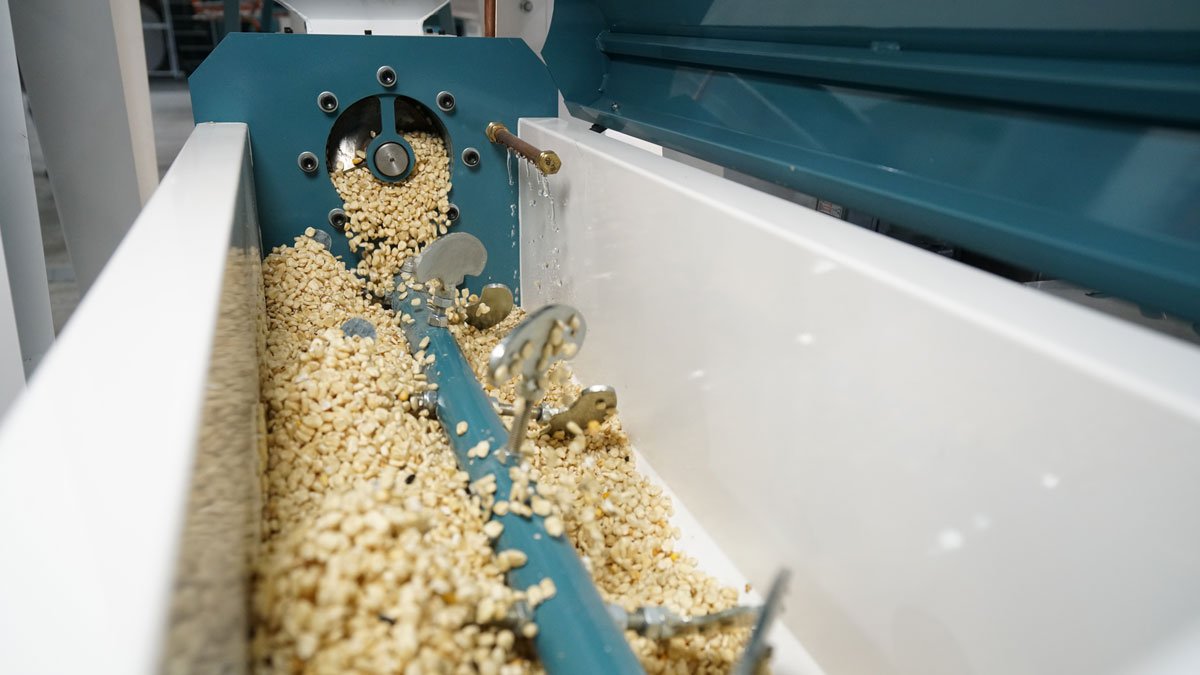THE IMPACTS ON PROFITABILITY AND PRODUCT QUALITY
The ultimate aim in the milling process is to make the best possible profit margin, without producing finished products of inferior quality. The hardness of the maize kernel plays an important role in both the extraction rate obtained in the mill, and the quality of the finished products.
This two-part series looks at maize kernel hardness from a miller’s perspective.
STRUCTURE OF A MAIZE KERNEL 
This illustration shows the structure of a maize kernel, which consists of three distinct parts: the hull or bran layers, the germ and the endosperm.
- The endosperm comprises approximately 51% hard, horny endosperm, which is mainly concentrated around the outer part and 23% soft, floury endosperm, which is mainly in the centre of the kernel.
- The germ at about 12% and the bran at about 14%, make up the rest of the kernel, which become maize offal or chop.
Ideally, and depending on the country and desired quality, this should relate to an extraction of between 74% to 78% endosperm, dependent on the ratio between the percentages hard versus soft endosperm. However, because of the strong adhesion of each of the parts, a complete and clean separation is extremely difficult to achieve in the milling process.
There are about six botanical groups of maize, but only two are suitable for milling purposes, namely dent and flint. Although flint maize is a hard type with little soft starchy endosperm in the centre of the kernel, its round shape means it’s not easy to degerminate and is therefore not favoured by millers.
At one time, dent and flint maize was graded separately, dent maize was classified WD, while flint maize was classified WF. This was later changed to WM to indicate ‘White Mixed’ maize.

OTHER FACTORS INFLUENCING MAIZE HARDNESS
Here are a few factors influencing maize kernel hardness over which the miller has some control:
01. CULTIVAR
Cultivar or variety of maize plays a part in kernel hardness. The miller has no direct control over this factor, but should have an idea of the quality of the maize in the various growing areas in the country. A visit to various co-ops after harvesting to look at the quality, especially the hardness factor, is always a good idea.
02. CLIMATE
The most important growing area for maize in South Africa is the maize triangle, bound by the towns of Carolina (Mpumalanga), Mahikeng (North West) and Ladybrand (Free State). All these regions are in the summer rainfall area with cold, dry winters. Natural drying in the winter months results in a hard endosperm with little or no stress cracks.
Other areas, such as the eastern part of Mpumalanga, and KZN, have milder winters and produce maize with a softer endosperm. If the miller requires hard endosperm maize, he should source his maize from areas which are known for producing such varieties. He must weigh up the extra cost of transporting the maize to the mill, against the loss in extraction and quality of the finished products.
03. ARTIFICIAL DRYING
Some silo operators dry the maize they receive from the farmer if the moisture content is above 14%. This is done so the maize does not deteriorate in storage and cause hot spots in the silo bin. If the maize is dried at too high a temperature, hairline stress cracks occur on the endosperm. These cracks form a natural breaking point on the endosperm, and when subjected to degermination, there will be a marked drop in the percentage of good quality samp being produced.

04. MAIZE CONDITIONING
This is where the maize hardness factor plays an important role. The harder the kernel, the more water it can absorb, while a softer endosperm would tend to absorb too much water and become soft. In a mixture of hard and soft maize kernels, the softer ones tend to absorb the moisture faster and become over conditioned, leaving the harder ones under conditioned.
1st conditioning
The objective is to stabilise the moisture content to a uniform figure throughout; usually adding 1% to 2% moisture and a lying time of 4 to 12 hours. Here the miller must reduce both the lying time and the amount of moisture added to ensure that softer maize remains as hard as possible. If the maize is very soft with a high moisture content, it might be best not to add any water at this stage. This would adversely affect the overall milling gain, but the miller must consider the pros and cons of obtaining a milling gain against that of being able to achieve a higher extraction rate and a better quality product.
2nd conditioning
Here, the goal is to toughen the bran skins and make the germ more pliable so that it’s removed easily from the endosperm. The lying time should be such that there’s no penetration of water into the endosperm, which must stay as hard as possible.
The above isn’t easily achievable with soft maize, and even more of a challenge when there’s a mixture of both hard and soft kernels. Regular checks on the conditioning and the operation of the degerminators are the best cause of action.
Experience has shown that it’s a good idea to have a conditioning bin for each degerminator in the mill. This should have a capacity of 20 minutes of the mill’s feed rate and should include an adjustable level probe. Hard maize would require a lying time of up to 20 minutes, while very soft maize might only require 5 to 10 minutes. In this way, it would be easier for the miller to control the conditioning of the maize.
Also read part 2 of this series where we unpack more factors that impact maize kernel hardness.







1 comment
Maize mailing egeneear